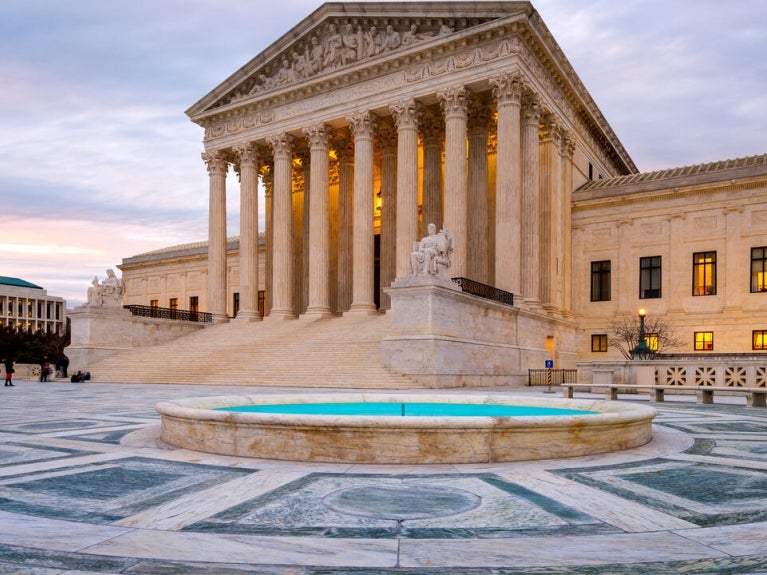Supreme Court Securities Fraud Ruling Further Limits SEC's Enforcement Authority, With Ripple Effects on Other Federal Agencies

In yesterday's 6-3 decision in SEC v. Jarkesy, the Supreme Court of the United States ruled that respondents to a U.S. Securities and Exchange Commission (SEC) in-house enforcement action alleging securities fraud and seeking civil penalties have a right to a federal jury trial under the Seventh Amendment. The decision by Chief Justice John Roberts, which seemingly applies to federal agencies generally, represents yet another curtailment of the SEC's authority. On the heels of the 2018 Lucia decision (holding unconstitutional the SEC's appointment of its administrative law judges (ALJs)) and the 2023 Axon decision (allowing respondents to take constitutional challenges to the agency's authority directly to federal court rather than forcing them through the administrative process), the Court continues to chip away at the SEC's enforcement authority. The decision also narrows the "public rights" exception that permits federal agencies to conduct in-house enforcement actions without a jury trial in certain circumstances.
The Jarkesy decision represents the culmination of a years-long debate concerning the scope of the SEC's enforcement authority. In the 2010 Dodd-Frank Wall Street Reform and Consumer Protection Act (Dodd-Frank), Congress significantly expanded the SEC's authority to bring securities fraud enforcement actions within its in-house tribunal structure, where the agency has historically prevailed at a much higher rate than in federal court.[1] These proceedings are overseen by Commission-appointed ALJs who exercise broad power to, among other things, impose significant monetary penalties, issue career-ending sanctions up to and including permanently barring market participants from associating with SEC-regulated entities, and bar lawyers and certified public accounts from appearing or practicing before the Commission.
Since Dodd-Frank's passing, market participants, politicians, and practitioners have criticized the statute's permissive structure—which allows the SEC the unfettered discretion to bring securities fraud cases in the tribunal of its choosing (in federal court or its own internal adjudicative system)—as unfair and unconstitutional. The Supreme Court in Jarkesy found that structure inconsistent with the Constitution's Seventh Amendment, which guarantees a right to a jury trial in civil suits at common law with more than $20 at issue. The Court rejected Dodd-Frank's effect of "concentrat[ing] the roles of prosecutor, judge, and jury in the hands of the Executive Branch" and held that "[a] defendant facing a fraud suit has the right to be tried by a jury of his peers before a neutral adjudicator."
With regard to the SEC in particular, the Jarkesy decision means that the agency must now litigate all securities fraud enforcement actions for civil penalties in federal court if the respondent requests a jury trial. As the Court recognized, these forums differ significantly "in who presides and makes legal determinations, what evidentiary and discovery rules apply, and who finds facts." Most notably, in federal court, the jury is the factfinder, "a life-tenured, salary-protected Article III judge presides," and the litigation is governed by federal evidentiary and discovery rules and procedures. In the SEC's in-house tribunal structure, on the other hand, "there are no juries." Instead, the case is overseen by an SEC-employed ALJ who acts as both judge and jury, with the authority to decide discovery disputes (which are governed by the SEC's own Rules of Practice); to determine the scope and form of permissible evidence (which includes allowing the admission of hearsay and other testimony that would be inadmissible in federal court); to find facts; and to impose monetary penalties and sanctions.
The additional burdens on the government that come with federal litigation—including more onerous discovery obligations, extensive motion practice, additional limits on admissible evidence, and ultimately the obligation to prove the agency's case to a jury rather than its own hand-picked arbiter—may prove to be a helpful leverage point and provide an opportunity for those who find themselves in the SEC's crosshairs to negotiate an early and more favorable resolution. As with any agency, the SEC has limited resources and bandwidth. And whereas the SEC could historically circumvent the federal court system by filing fraud cases through an administrative proceeding—a less demanding, faster, and generally more favorable forum for the agency—the Supreme Court has now eliminated that avenue as an option. With that path foreclosed and with the knowledge that it must prove its cases in a more demanding forum, the SEC may be more careful and conservative in assessing the cases it chooses to litigate—and potentially more open to resolving them earlier and on more acceptable terms to respondents.
The SEC argued for the application of an exception to the Seventh Amendment that permits Congress to enact legislation directing matters to an agency for adjudication when certain "public rights" are involved (e.g., the administration of public land or granting of public benefits, such as payments to veterans). The Court, however, rejected that argument, reasoning that the analysis of whether a public right is implicated depends on the substance of the action and not whether Congress assigned it by legislation. Because the antifraud provisions of the federal securities laws are based on common law principles and provide for punitive, civil penalties, securities fraud actions inherently concern private rights that, under the Court's precedents, require adjudication in an Article III court.
While the Jarkesy decision is sure to have rippling effects on other administrative agencies that engage in in-house enforcement actions, the ultimate scope and impact of the decision outside of the securities enforcement context is uncertain and likely will be litigated for years to come. Notably, the decision may provide a significant signal of what is to come in the pending constitutional challenge to yet another securities regulator—the Financial Industry Regulatory Authority (FINRA)—whose own in-house tribunal structure is facing a constitutional challenge* before the U.S. Court of Appeals for the D.C. Circuit in Alpine Securities Corp. v. FINRA. Although FINRA is a private self-regulatory organization, it, too, is empowered (and, in fact, required) by Congress to enforce the federal securities law. And it does so through private enforcement proceedings overseen by FINRA-employed hearing officers that are near "carbon copies" of the SEC's ALJs.[2] Several respondents to FINRA enforcement actions have argued in recent years that FINRA, in enforcing the federal securities laws, acts as a "state actor" akin to the SEC with its attendant constitutional obligations. Those arguments have so far met with some success (though not universally). If the Supreme Court were ultimately to find that FINRA is constrained by the Seventh Amendment, then it follows that respondents in FINRA fraud actions also have "the right to be tried by a jury of [their] peers before a neutral adjudicator." And because FINRA has no private right of action under the federal securities laws, it conceivably would have to refer those cases to the SEC. The question of FINRA's constitutional authority is still pending in the D.C. Circuit, but it is all but guaranteed that it will be appealed to the Supreme Court. And given Jarkesy and the Court's other recent decisions, such arguments may have a receptive audience before the current bench.
Endnotes
[1] See, e.g., Jean Eaglesham, SEC Wins With In-House Judges,* Wall St. J. (May 6, 2015), (comparing the SEC's 90% success rate before ALJs in contested cases from October 2010 through March 2015 to its 69% success rate in federal court over the same time period).
[2] Scottsdale Cap. Advisors v. FINRA, No. 23-1506 (D.D.C. Jun. 7, 2023).
*Subscription-based publication.
© 2024 Perkins Coie LLP





